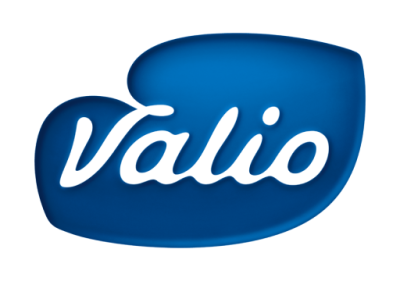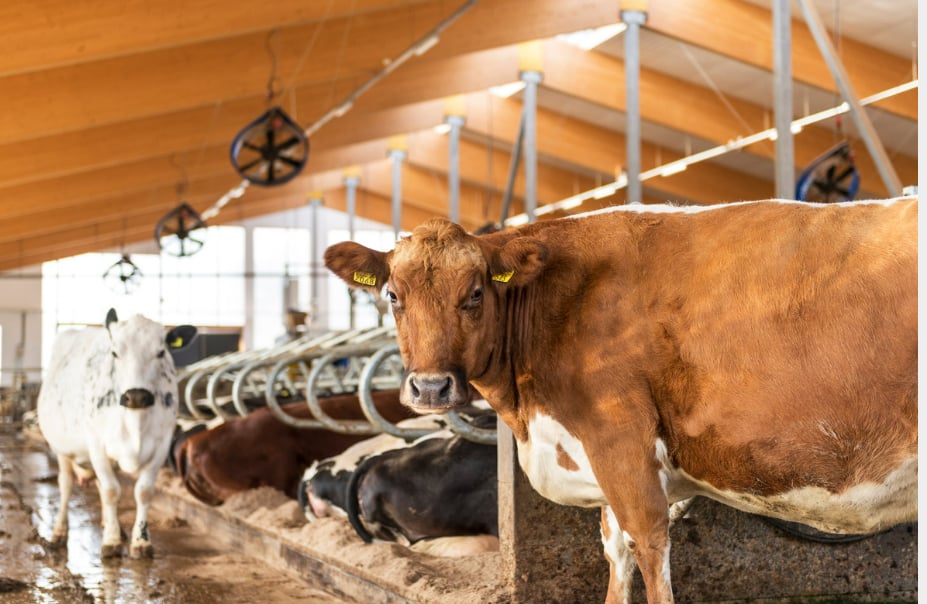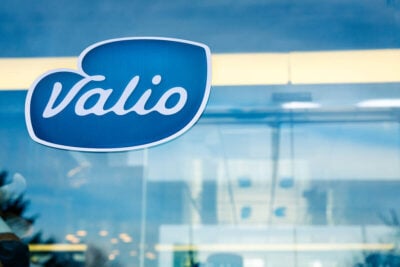Valio and VTT, Technical Research Centre of Finland Ltd, are participating in an international research project exploring the use of plasma technology to capture the methane in barn air and break it down into carbon dioxide. In Finnish conditions, the methane emissions generated in conjunction with milk production account for about 50 percent of milk’s carbon footprint. The goal of the research project is to develop equipment that can convert the greenhouse gas methane that is captured from barn air into less harmful carbon dioxide.
In milk production, methane is generated in the cow’s rumen in conjunction with digestion and in the handling and storage of manure at dairy farms. Like carbon dioxide, methane is a greenhouse gas, but with a shorter, 28 times more potent warming effect on the atmosphere than carbon dioxide. In the atmosphere, methane decomposes into carbon dioxide in 10–12 years.
The EU area has about 1.8 million cattle farms with a total of approx. 77 million cows producing 158 MT CO2e of methane per year. Agriculture accounts for 10 percent of the EU’s greenhouse gas emissions, and methane generated by ruminants accounts for 43 percent of emissions from agriculture. The European Union Fit for 55 package aims for carbon neutrality in the agriculture sector by 2035. Achieving the target will require fast and cost-effective solutions.
“Our goal is to develop a new, eco-friendly, cost-effective technological solution that captures and breaks down the methane in barn air. This would enable us to cut the amount of barn air methane that ends up in the atmosphere by as much as 90 percent. When we convert the methane released in barn air into carbon dioxide, the more potent warming effect of methane is decreased. This, in turn, reduces the climate impacts of milk production by an estimated 30–40 percent,” says Juha Nousiainen, Valio’s Senior Vice President who heads the Climate programme.
Cold plasma technology can reduce methane’s warming effect already at the barn
Of the several gases in barn air, methane accounts for a very small fraction: some hundreds of parts per million. One cow produces about 15 kilograms of methane in a year. Early this year, the research project headed by VTT started measuring and identifying the gas mixture in barn air. The measuring is taking place at Valio’s Arvela dairy farm in Pöytyä, Finland, where there are 240 cows. Among the participants in the EU-funded, four-year CANMILK project are top universities, researchers and knowledge transfer partners from Belgium, England, Germany, and The Netherlands.
Cold plasma is present in many everyday things and phenomena, such as fluorescent tubes and in the sky creating northern lights. Cold plasma is formed when electrons in the gas become hot enough.
“Cold plasma is used to break down methane by exciting the gas molecules in the barn air to react with the methane. This is done using electricity in a unit located outside the barn,” says Senior Advisor Pekka Simell from VTT.
Developing new technology to control methane emissions is significant also on global level because reducing agriculture’s greenhouse gas emissions is necessary.
Valio’s ambitious climate programme consists of concrete actions to cut milk’s carbon footprint to zero by 2035. This means that an equal amount of greenhouse gases generated in milk production is sequestered by 2035.
Atmospheric methane breaks down into carbon dioxide in about 10–12 years. Atmospheric carbon dioxide is sequestered in plants and soil through photosynthesis. Like forests, grasses sequester and store carbon in their roots. Carbon dioxide is stored in grass as carbohydrates. When a cow eats grass, ruminates and burps, the carbon stored in the grass is released into the atmosphere as methane; the methane breaks down into carbon dioxide in 12 years – and re-emerges in plants through photosynthesis.
“It is clear that agricultural emissions must be significantly reduced. There are several alternatives, and not all methods have been invented yet. Cows enable us to produce high-quality food products also in northern regions where grass grows well but food crops do not produce sufficient yields. The trade-off for this is the methane emissions generated by the cows. However, we have several good possibilities for significantly reducing methane in the years to come. Methane capture and decomposition technology will help us get closer to our goal,” Juha Nousiainen sums up.




